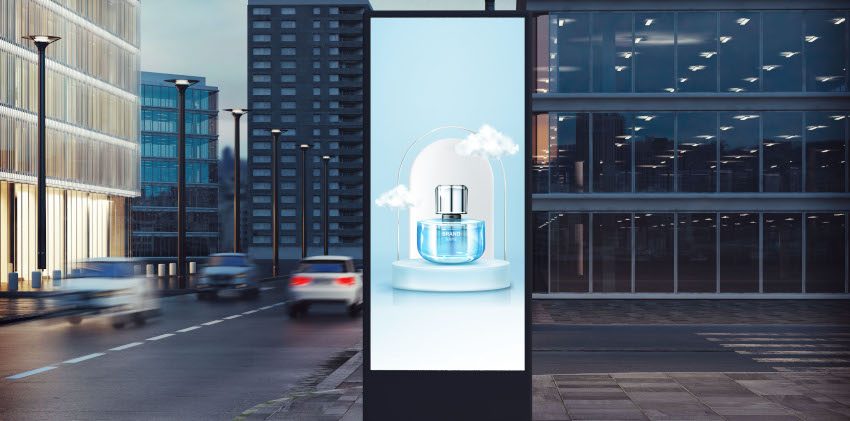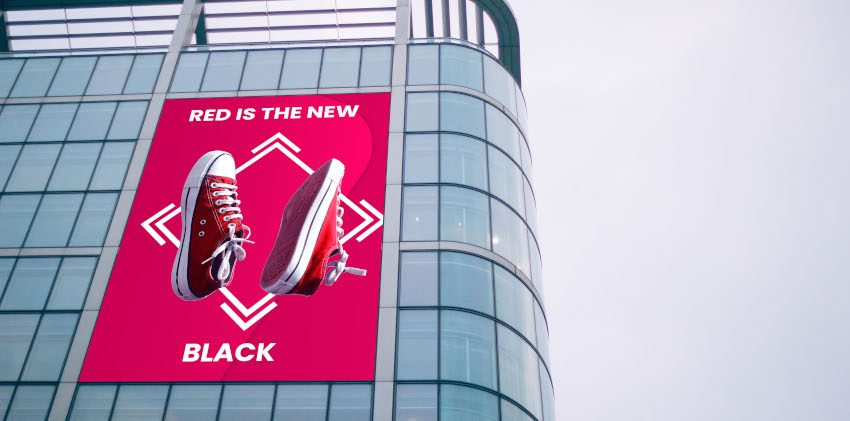Why is Programmatic DOOH Better Than Non-Programmatic DOOH?
Bigger audiences are coming back into the public spaces, and COVID-19 lockdowns are ending. Consequently, out-of-home (OOH) advertising is bouncing back. Statistics show that estimated spending rose to approximately $36.6 billion globally in 2021. The growth brings OOH to the second position as the fastest-growing advertising platform. Specifically, the increase has been due to digital out-of-home advertising (DOOH).
Although the last two years have been problematic for business, OOH has proved innovative. Additionally, it has shown significant transformation, made possible by companies adopting programmatic technology. The pandemic saw many media owners make moves to make their digital inventory accommodative of programmatic DOOH. Furthermore, data availability and automation have enabled the streamlining of multiple manual processes.

While OOH was once a reserve of specific marketers and was governed by the “insertion order,” the landscape has changed. Initially, OOH would require communication through phone calls and emails, besides location scouting. The procedure would end up at the ad ops for charting and trafficking. Currently, the process is entirely different, bringing more valuable benefits for agencies, brands, and media owners.
The following section delves into why programmatic DOOH is better than non-programmatic DOOH.
The Outstanding Trends in Programmatic DOOH
Programmatic DOOH is the automation of the buying process for DOOH ads. It allows buyers to bid on and automatically buy ad space depending on whether certain conditions exist. Initially, the takeoff of programmatic buying of digital space was slow because DOOH inventory was lacking.
Digital billboards have become more prevalent in town centers, cities, bus shelters, and other public spaces. Consequently, this media now stands out and has a significant share of the ever-growing digital out-of-home spend. The forecast shows that it’ll grow to 14.8% by the end of 2022, up from 3.2% in 2019.
As the trend suggests, if it were possible for people to drape digital screens on every large animal and make money selling advertising space, they’d already be doing so. While this view is bleak, it’s not entirely far-fetched. For example, some cities are already experiencing this change and proposing legislation to limit screens and, consequently, digital advertising clutter. The phenomenon isn’t US-based only, as some grassroots campaigns in the UK are also fighting the rise of large format digital ads.
Why is Programmatic DOOH Taking Over?
It’s not difficult to see why programmatic digital ads are taking over the marketing industry. As an illustration, website ads have become pervasive over the last one and a half decades. Banner blindness is so prevalent that users have become accustomed to ignoring ad-like content. They also overlook content that appears in locations commonly reserved for ads.
What is Banner Blindness?
Banner blindness is a behavior tied to selective attention. In other words, it’s a behavior preference and environmental conditioning factor that can happen consciously or unconsciously. People tend to apply banner blindness when they don’t want to interact with ads that may disrupt their experience.
To illustrate, imagine that you want to catch up with news on a news site. When visiting the site, your goal would be to quickly skim through the headlines as soon as the page loads. By doing so, you’ll instantly scroll past the banner ad sections of the site. Users skip banner ads for two primary reasons:
- The ad doesn’t help them achieve their goals in interacting with specific content
- The ad isn’t engaging enough to divert the user’s attention from their goal
Noticeably, the behavior applies to more than just digital advertising. It’s questionable whether people pay attention to the average digital signage campaign. How well do they absorb, connect, and remember digital signage content?
That’s why OOH has become more digitally focused yet still relies on old methods of monetizing content. Users’ ability to tune it out will only become solid. Historically, advertising agencies understood the need, science, and audience for this type of advertising. As it is right now, anyone with a screen is on the decision-making end.
The Pillars to Effective Programmatic DOOH

Anyone in digital marketing would love the explosion of a large digital format. Undoubtedly, they can be a resource for telling stories, rallying communities, and creating moving art while incorporating beauty in the cities. This can be possible if players rethink two key elements; the intent and the content.
Intent: Incorporate More Functions and Possibilities
The screen is just an opportunity to sell advertising spots for many people. Therefore, they hold on to the wrong thinking that there’s only one way to get ROI from digital screens. Their monetization formula revolves around a steady crowd of followers and x screen ad sales.
Indeed, the expectation is that at least many of those followers will look at the ad and respond later. However, banner blindness could come in the audience’s way, watering down an advertiser’s efforts. On the contrary, there are many advertising possibilities for large format digital, which can pay off in longer-lasting residual value.
Consider the example of F.A.O. Schwarz and their holiday windows. The brand uses the moment to wrap emotion and context around its products for a sense of wonder that represents the in-store experience. As people stop to marvel at the windows’ beauty, they’re attracted to the inside of the shop. While inside, their likelihood to shop is high. They also spread the word about the brand, bringing in more people to have the same experience and to shop.
Sadly, the concept isn’t well utilized in digital signage. Undeniably, people love spending time near beautiful things. When brands embrace the intent to increase the time people spend in a place, they can boost engagement and retention. Besides, they increase referrals and, ultimately, the long-term financial value.
Content: Purpose All-Around
While 93% of B2B marketers use content marketing, only 42% are confident about its effectiveness. While these figures refer to marketers in the B2B space, they reflect what generally happens with content marketing. In short, many marketers create content with no way of measuring or optimizing the strategy.
Traditionally, marketers would display a message in the way they wanted their audience to see it right away or drive a transaction. Sadly, the approach only puts the viewer’s needs in second place.
Programmatic DOOH uses a different approach. It implements advertising campaigns on digital screens by merging the ads with valuable content for the audience. For example, artistic pieces can have functionality like communicating brand values, setting expectations for brand interaction, or contributing to pace-making.
A company like Nike uses branded content relevant to its product line but doesn’t directly advertise the product. The approach brings the audience close to the brand, opening up an avenue for a deep conversation with the customer. Consequently, the function goes beyond direct advertising.

Final Thoughts
Programmatic DOOH can do more for brands and cities if they look beyond a single use. They should gravitate towards employing more symbiotic methods. More importantly, the intention should be more decoration, entertainment, and storytelling while putting the audience first and creating a sense of community. Nonetheless, it doesn’t mean businesses shouldn’t expect a return on their DOOH efforts.


